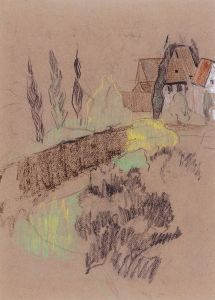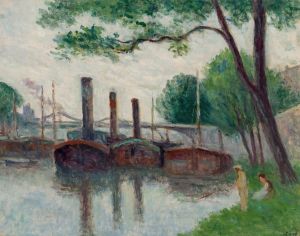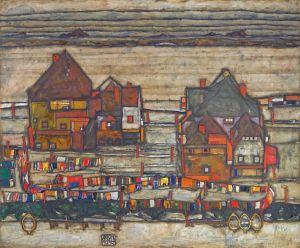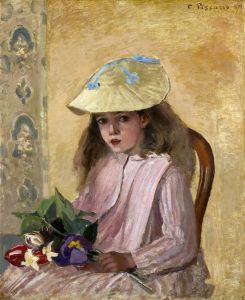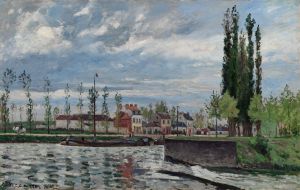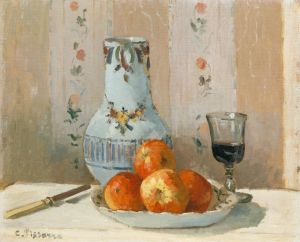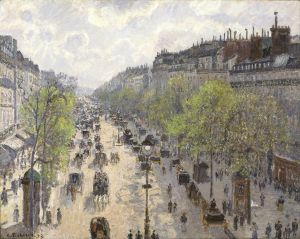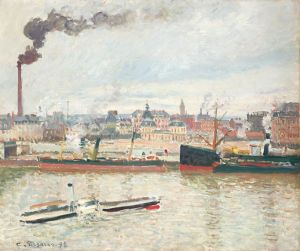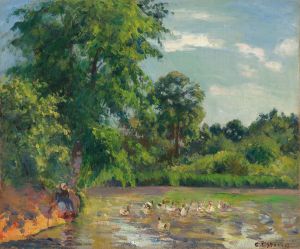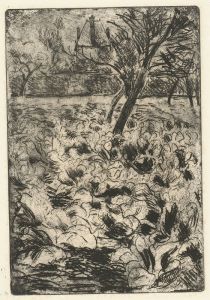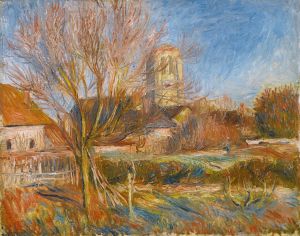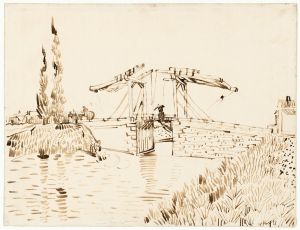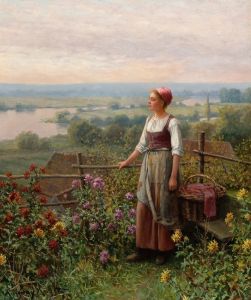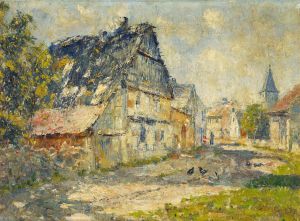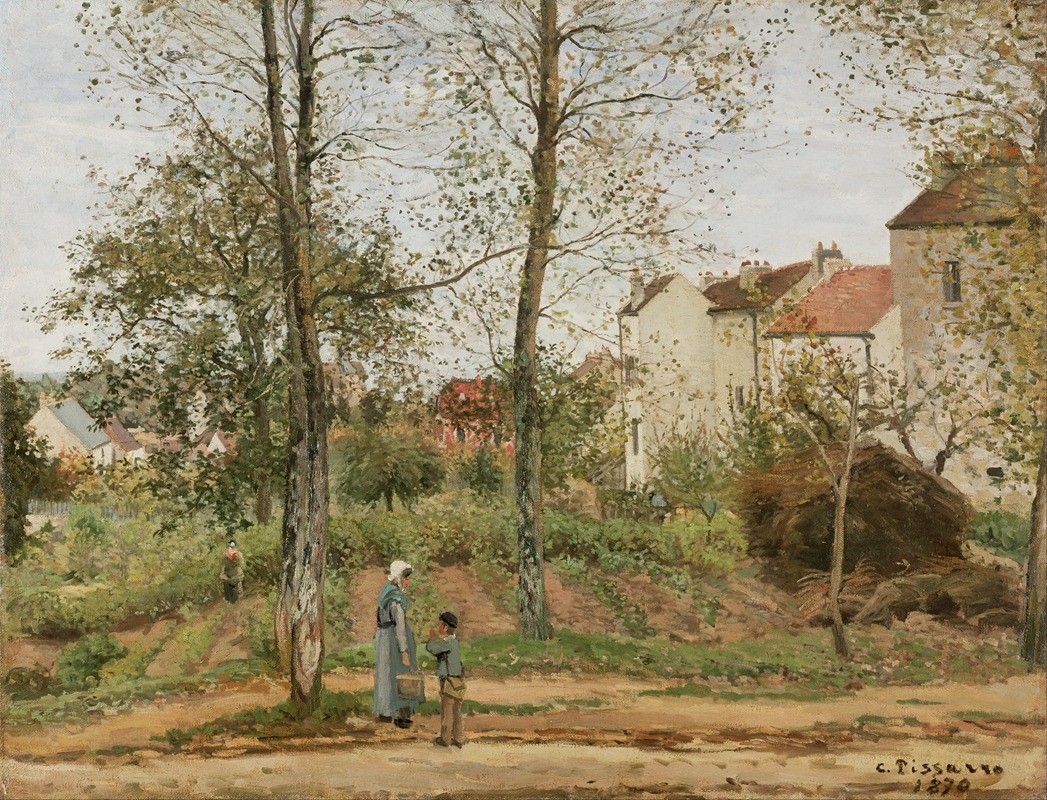
Houses at Bougival
A hand-painted replica of Camille Pissarro’s masterpiece Houses at Bougival, meticulously crafted by professional artists to capture the true essence of the original. Each piece is created with museum-quality canvas and rare mineral pigments, carefully painted by experienced artists with delicate brushstrokes and rich, layered colors to perfectly recreate the texture of the original artwork. Unlike machine-printed reproductions, this hand-painted version brings the painting to life, infused with the artist’s emotions and skill in every stroke. Whether for personal collection or home decoration, it instantly elevates the artistic atmosphere of any space.
"Houses at Bougival" is a painting by the renowned French artist Camille Pissarro, who was a pivotal figure in the Impressionist movement. This artwork exemplifies Pissarro's dedication to capturing the essence of rural and suburban life through his innovative use of color and light.
Camille Pissarro was born on July 10, 1830, on the island of St. Thomas in the Danish West Indies. He moved to Paris in 1855, where he became deeply involved with the burgeoning Impressionist movement. Pissarro was known for his landscapes and scenes of everyday life, often depicting rural settings and the changing seasons. His work was characterized by a commitment to painting en plein air, or outdoors, which allowed him to capture the natural light and atmosphere of his subjects.
"Houses at Bougival" was painted in 1870, a period when Pissarro was exploring the countryside around Paris. Bougival, a small village located on the banks of the Seine River, was a popular retreat for artists of the time due to its picturesque scenery and proximity to the city. The village's charming landscapes provided ample inspiration for Pissarro and his contemporaries, including Claude Monet and Alfred Sisley.
In this painting, Pissarro employs his signature Impressionist techniques to depict the quaint houses of Bougival. The composition is marked by a harmonious balance between the built environment and the natural surroundings. Pissarro's brushwork is loose and fluid, capturing the play of light and shadow across the scene. The use of vibrant colors and varied textures brings the landscape to life, reflecting the artist's keen observation of nature.
Pissarro's approach to "Houses at Bougival" demonstrates his interest in the effects of light and atmosphere. The painting captures a specific moment in time, with the sunlight casting dappled shadows on the houses and the surrounding foliage. This attention to the transient qualities of light is a hallmark of Impressionist painting and underscores Pissarro's role as a leading figure in the movement.
Throughout his career, Pissarro remained committed to the principles of Impressionism, even as the movement evolved and new artistic styles emerged. His work was influential in shaping the direction of modern art, and he was a mentor to several younger artists, including Paul Cézanne and Paul Gauguin. Pissarro's dedication to his craft and his innovative techniques have earned him a lasting legacy in the history of art.
"Houses at Bougival" is housed in the collection of the National Gallery of Art in Washington, D.C. The painting is an excellent example of Pissarro's ability to convey the beauty and tranquility of rural life through his masterful use of color and composition. It remains a testament to his skill as an artist and his enduring influence on the Impressionist movement.
In summary, "Houses at Bougival" by Camille Pissarro is a quintessential Impressionist painting that captures the serene beauty of a rural village near Paris. Through his expert use of light, color, and composition, Pissarro creates a vivid portrayal of the landscape, reflecting his deep appreciation for the natural world and his innovative contributions to the art of his time.





